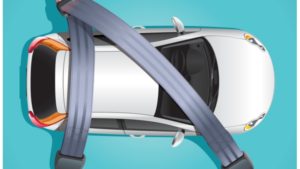
A motor insurance policy has some technical concepts which are often not understood by the common folk. As such, when buying the policy the concepts are ignored and at the time of a claim, this ignorance results in a loss. So, it is always better to understand the important concepts of your motor insurance policy. One such technical and important concept is excess. Do you know about it? Let’s find out –
Excess in motor insurance policy
Excess represents that part of claim which is payable by you. In each instance of claim, you have to pay the specified amount yourself. The insurance company would then pay the remaining amount.
Types of excess:Motor insurance policies have two types of excess- compulsory excess and voluntary excess
- Compulsory excess in motor insurance – as is evident from the name, this excess is mandatorily borne by you. The amount is fixed and not within your control. Both car and two-wheeler insurance policies have a compulsory excess.
- Voluntary excess in motor insurance – voluntary excess is a way to reduce your premium. Sometimes, customers want to decrease their premium and they choose voluntary deductible. Choosing voluntary deductible lowers the premium rate by making the customer bear a certain portion of the claim amount voluntarily.
Difference between compulsory and voluntary excess:
While compulsory excess is universal in all motor insurance policies, voluntary excess is at the discretion of the policyholder. Therefore, choosing a voluntary excess earns a premium discount while compulsory excess doesn’t.
Why the concept of compulsory excess?
The concept of excess is applicable in a motor insurance policy to dissuade you from making small, trivial claims. When you know that the extent of the excess is payable by you, you would refrain from making small claims in your motor insurance policy. This would also help you save your no claim discount.
How compulsory and voluntary excess work?
Suppose, in a motor insurance policy, the compulsory excess is Rs.2000. On top of that, you choose a voluntary excess of Rs.1000. If there is a claim of Rs.10,000, you would have to pay Rs.2000 of the compulsory excess and Rs.1000 of the voluntary excess. You, therefore, pay Rs.3000 while the insurance company settles your claim for Rs.7000.
When to choose voluntary excess?
Since you have no control over compulsory excess, you should be careful when choosing voluntary excess. If you are a good driver with a clean driving record and are very careful, you can opt for voluntary deductible. Since the incidence of claim would be low given your driving skills, you wouldn’t have to bear high proportions of claims and can also earn a premium discount.
Things to keep in mind before choosing voluntary deductible
Remember the following things before you think of choosing voluntary deductible in your policy –
• Affordability
Voluntary excess denotes your out-of-pocket expenses. As such, be careful in choosing the amount. Since you would already have the responsibility of paying for the compulsory excess, choose voluntary excess only if the total of the two excesses is affordable for you.
• Economy
Though the associated voluntary deductible discounts might tempt you, assess the economy of choosing the voluntary excess. If the discount earned is lower than the out-of-pocket expense on the excess, choosing a voluntary excess is not economical.
Understand the two excesses applicable in motor insurance policies as they have an impact on the claim settlement. They represent out-of-pocket expenses and so you should be aware about both.
Read more about 5 things that impact your car insurance premiums
Read more about How much car insurance do you really need?
Read more about All you need to know about car insurance
Read more about Types of car insurance covers and their benefits
Check the below video to know more about compulsory excess




























